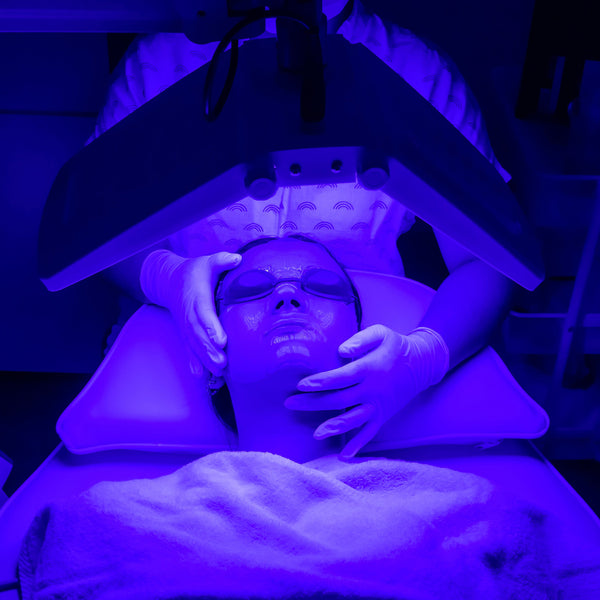Clear Skin Ahead: Harnessing the Power of Acne Patches to Combat Breakouts and Prevent Hyperpigmentation

Introduction:
Acne is a common skin condition that affects millions of people worldwide, regardless of age or gender. Not only can breakouts be physically uncomfortable, but they can also leave behind unwanted reminders in the form of hyperpigmentation. However, in recent years, there's been a game-changing solution gaining popularity in the skincare world: acne patches. These small, adhesive patches are revolutionizing the way we approach acne treatment, offering a convenient and effective method for reducing breakouts and preventing hyperpigmentation.
Understanding Acne Patches:
Acne patches, also known as pimple patches or hydrocolloid patches, are thin, translucent stickers that adhere to the skin over active blemishes. They work by creating a barrier that protects the pimple from external irritants while absorbing excess fluid and promoting faster healing. Most acne patches are made from hydrocolloid, a gel-like material commonly used in wound dressings for its moisture-absorbing properties.
How Acne Patches Combat Breakouts:
1. Absorption of Excess Oil and Fluid: Acne patches create a sealed environment around the blemish, which helps to absorb excess oil, pus, and other fluids that accumulate within the pimple. By keeping the area clean and dry, acne patches prevent bacterial growth and promote faster healing.
2. Protection from External Irritants: One of the main benefits of acne patches is their ability to protect the pimple from external irritants such as dirt, bacteria, and makeup. By covering the blemish, acne patches prevent further inflammation and reduce the risk of secondary infections.
3. Encouragement of Proper Healing: By creating a moist environment, acne patches mimic the conditions necessary for optimal wound healing. This encourages the skin to repair itself more efficiently, leading to faster resolution of the blemish and reduced risk of scarring or hyperpigmentation.
Preventing Hyperpigmentation:
In addition to their acne-fighting properties, acne patches also play a crucial role in preventing hyperpigmentation, which occurs when dark spots form on the skin after a blemish has healed. Here's how acne patches can help:
1. Minimization of Trauma: Picking, squeezing, or popping pimples can cause trauma to the skin, leading to inflammation and an increased risk of hyperpigmentation. By covering the blemish with an acne patch, you're less likely to succumb to the temptation of picking, which helps minimize trauma and reduce the likelihood of post-inflammatory hyperpigmentation.
2. Even Distribution of Pressure: Acne patches provide a gentle, even pressure over the blemish, which can help prevent the formation of scars and dark spots. This is especially beneficial for cystic acne, which tends to be deeper and more prone to scarring.
3. Promotion of Proper Healing: As mentioned earlier, acne patches create an optimal environment for wound healing, which includes minimizing inflammation and promoting collagen production. By supporting the skin's natural healing process, acne patches help ensure that blemishes fade away without leaving behind stubborn dark spots.
Incorporating Acne Patches into Your Skincare Routine:
Using acne patches is simple and can be incorporated into your existing skincare routine with ease. Here's a basic guide to getting started:
1. Cleanse your face thoroughly to remove any dirt, oil, or makeup.
2. Gently dry the affected area with a clean towel.
3. Select an acne patch that matches the size of your blemish and carefully apply it to the skin, pressing down gently to ensure adhesion.
4. Leave the patch on for several hours or overnight to allow it to work its magic.
5. Remove the patch and dispose of it properly.
6. If necessary, follow up with your regular skincare products, such as moisturizer or spot treatment.
Acne patches are a game-changer in the world of skincare, offering a simple yet effective solution for combating breakouts and preventing hyperpigmentation. By creating a protective barrier over blemishes and promoting faster healing, these small adhesive stickers can help you achieve clearer, smoother skin without the risk of scarring or dark spots. Whether you're dealing with occasional pimples or chronic acne, incorporating acne patches into your skincare routine can make a world of difference in the appearance and health of your skin. Say goodbye to stubborn breakouts and hello to a brighter, more radiant complexion with the power of acne patches.
Acne is a common skin condition that affects millions of people worldwide, regardless of age or gender. Not only can breakouts be physically uncomfortable, but they can also leave behind unwanted reminders in the form of hyperpigmentation. However, in recent years, there's been a game-changing solution gaining popularity in the skincare world: acne patches. These small, adhesive patches are revolutionizing the way we approach acne treatment, offering a convenient and effective method for reducing breakouts and preventing hyperpigmentation.
Understanding Acne Patches:
Acne patches, also known as pimple patches or hydrocolloid patches, are thin, translucent stickers that adhere to the skin over active blemishes. They work by creating a barrier that protects the pimple from external irritants while absorbing excess fluid and promoting faster healing. Most acne patches are made from hydrocolloid, a gel-like material commonly used in wound dressings for its moisture-absorbing properties.
How Acne Patches Combat Breakouts:
1. Absorption of Excess Oil and Fluid: Acne patches create a sealed environment around the blemish, which helps to absorb excess oil, pus, and other fluids that accumulate within the pimple. By keeping the area clean and dry, acne patches prevent bacterial growth and promote faster healing.
2. Protection from External Irritants: One of the main benefits of acne patches is their ability to protect the pimple from external irritants such as dirt, bacteria, and makeup. By covering the blemish, acne patches prevent further inflammation and reduce the risk of secondary infections.
3. Encouragement of Proper Healing: By creating a moist environment, acne patches mimic the conditions necessary for optimal wound healing. This encourages the skin to repair itself more efficiently, leading to faster resolution of the blemish and reduced risk of scarring or hyperpigmentation.
Preventing Hyperpigmentation:
In addition to their acne-fighting properties, acne patches also play a crucial role in preventing hyperpigmentation, which occurs when dark spots form on the skin after a blemish has healed. Here's how acne patches can help:
1. Minimization of Trauma: Picking, squeezing, or popping pimples can cause trauma to the skin, leading to inflammation and an increased risk of hyperpigmentation. By covering the blemish with an acne patch, you're less likely to succumb to the temptation of picking, which helps minimize trauma and reduce the likelihood of post-inflammatory hyperpigmentation.
2. Even Distribution of Pressure: Acne patches provide a gentle, even pressure over the blemish, which can help prevent the formation of scars and dark spots. This is especially beneficial for cystic acne, which tends to be deeper and more prone to scarring.
3. Promotion of Proper Healing: As mentioned earlier, acne patches create an optimal environment for wound healing, which includes minimizing inflammation and promoting collagen production. By supporting the skin's natural healing process, acne patches help ensure that blemishes fade away without leaving behind stubborn dark spots.
Incorporating Acne Patches into Your Skincare Routine:
Using acne patches is simple and can be incorporated into your existing skincare routine with ease. Here's a basic guide to getting started:
1. Cleanse your face thoroughly to remove any dirt, oil, or makeup.
2. Gently dry the affected area with a clean towel.
3. Select an acne patch that matches the size of your blemish and carefully apply it to the skin, pressing down gently to ensure adhesion.
4. Leave the patch on for several hours or overnight to allow it to work its magic.
5. Remove the patch and dispose of it properly.
6. If necessary, follow up with your regular skincare products, such as moisturizer or spot treatment.
Acne patches are a game-changer in the world of skincare, offering a simple yet effective solution for combating breakouts and preventing hyperpigmentation. By creating a protective barrier over blemishes and promoting faster healing, these small adhesive stickers can help you achieve clearer, smoother skin without the risk of scarring or dark spots. Whether you're dealing with occasional pimples or chronic acne, incorporating acne patches into your skincare routine can make a world of difference in the appearance and health of your skin. Say goodbye to stubborn breakouts and hello to a brighter, more radiant complexion with the power of acne patches.










